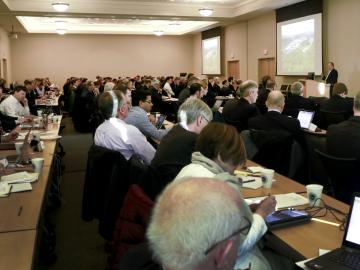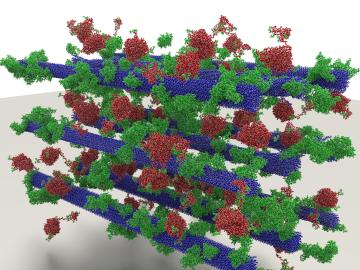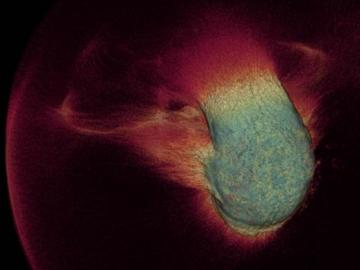
Filter News
Area of Research
- Biology and Environment (36)
- Biology and Soft Matter (1)
- Computer Science (1)
- Electricity and Smart Grid (1)
- Energy Science (34)
- Functional Materials for Energy (2)
- Fusion and Fission (11)
- Isotopes (1)
- Materials (31)
- Materials for Computing (3)
- National Security (21)
- Neutron Science (13)
- Nuclear Science and Technology (5)
- Supercomputing (43)
News Type
News Topics
- 3-D Printing/Advanced Manufacturing (4)
- Advanced Reactors (1)
- Artificial Intelligence (7)
- Big Data (5)
- Bioenergy (16)
- Biology (19)
- Biomedical (3)
- Biotechnology (2)
- Buildings (5)
- Chemical Sciences (7)
- Clean Water (2)
- Composites (1)
- Computer Science (13)
- Coronavirus (3)
- Critical Materials (1)
- Cybersecurity (5)
- Energy Storage (11)
- Environment (29)
- Exascale Computing (4)
- Frontier (5)
- Fusion (5)
- Grid (3)
- High-Performance Computing (10)
- Hydropower (3)
- Isotopes (1)
- ITER (1)
- Machine Learning (5)
- Materials (15)
- Materials Science (10)
- Mercury (1)
- Microscopy (8)
- Nanotechnology (5)
- National Security (9)
- Neutron Science (4)
- Nuclear Energy (6)
- Partnerships (2)
- Physics (4)
- Polymers (1)
- Quantum Computing (5)
- Quantum Science (3)
- Security (3)
- Simulation (4)
- Space Exploration (1)
- Summit (5)
- Transportation (5)
Media Contacts

Adrian Sabau and Robert Wagner of the Department of Energy's Oak Ridge National Laboratory have been appointed fellows of the American Society of Mechanical Engineers (ASME), an honor conferred to members who have demonstrated significant, long-term engineering achievements.

Claus Daniel, materials scientist and deputy director of the Sustainable Transportation program at the Department of Energy’s Oak Ridge National Laboratory, delivered a Gilbreth Lecture at the National Academy of Engineering (NAE) annual meeting, held February 11 in...

Moving advanced nuclear reactors from the drawing board to the field was the focus of the Advanced Reactors Technical Summit III, hosted by the Department of Energy’s Oak Ridge National Laboratory and attended by 180 experts from industry, government and academia. The conference, ...



The commercial licensing of a cyber security technology developed at the Department of Energy's Oak Ridge National Laboratory has been recognized by the Federal Laboratory Consortium for Technology Transfer (FLC) as a top example of moving technology

Since lasers were first produced in the early 1960s, researchers have worked to apply laser technology from welding metal to surgeries, with laser technology advancing quickly through the last 50 years. Surgery, chemotherapy, and radiation therapy all play important roles...

A group of nuclear detectives at the Department of Energy’s Oak Ridge National Laboratory takes on tough challenges, from detecting illicit uranium using isotopic “fingerprints” to investigating Presidential assassination conspiracies.

Rechargeable batteries power everything from electric vehicles to wearable gadgets, but obstacles limit the creation of sleeker, longer-lasting and more efficient power sources. Batteries produce electricity when charged atoms, known as ions, move in a circuit from a positive end ...



